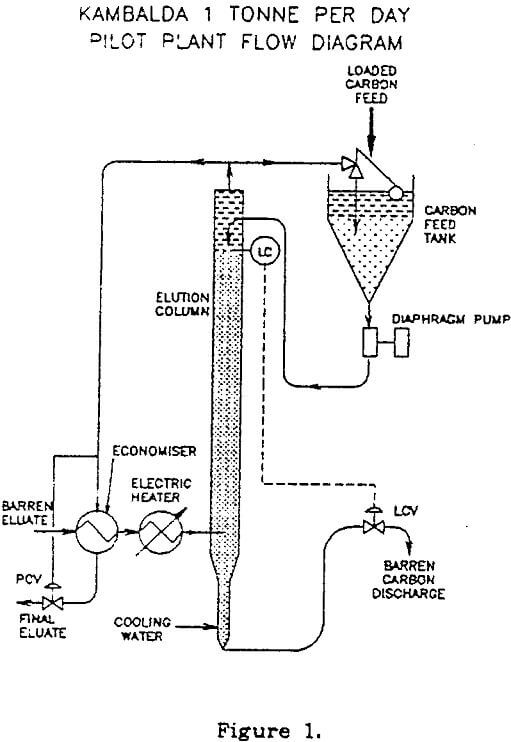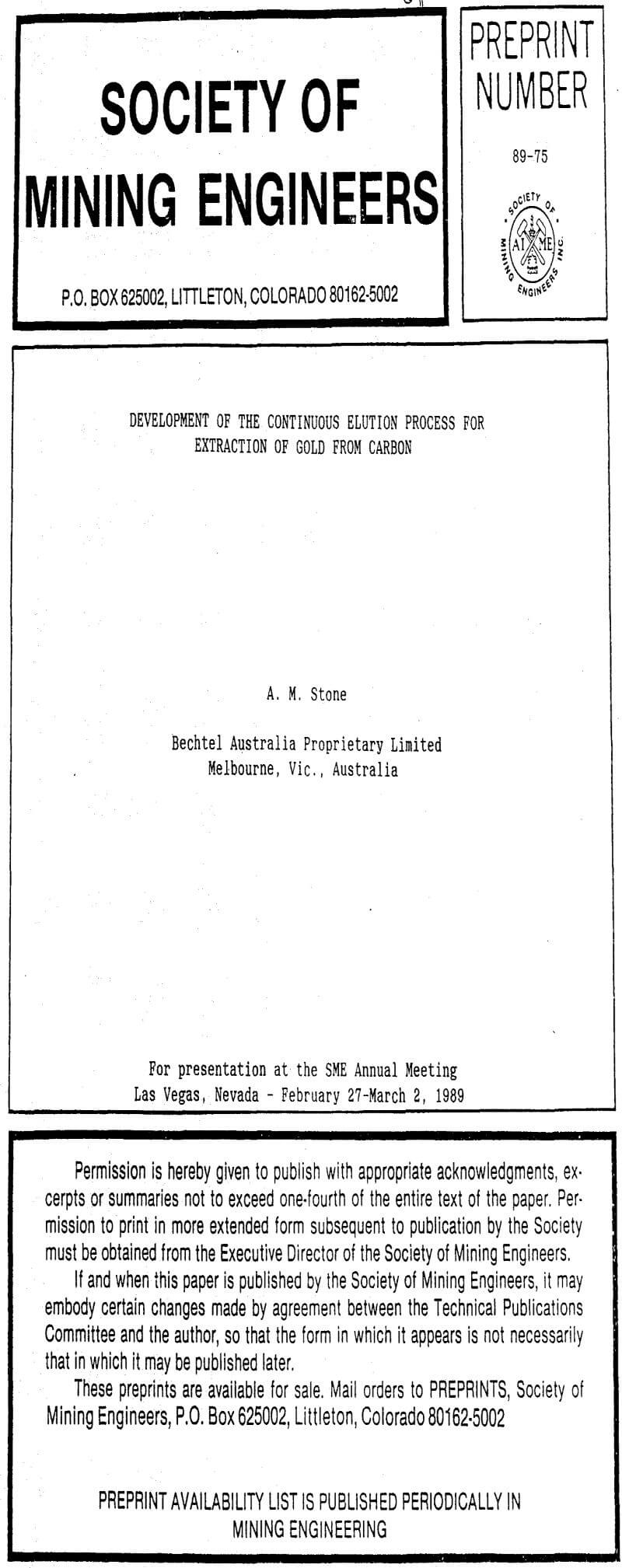 The continuous elution process is a continuous counter-current system operating in a pressure vessel at elevated pressure and temperature in which both carbon and the eluate are simultaneously moving through each other in opposite directions.
The continuous elution process is a continuous counter-current system operating in a pressure vessel at elevated pressure and temperature in which both carbon and the eluate are simultaneously moving through each other in opposite directions.
During this process the carbon particles enter the top of the vessel loaded with gold and exit barren through the bottom, while the hot pressurised barren eluate enters near the bottom of the vessel and exits loaded with gold near the top.
Cooling water enters near the bottom of the vessel, cools the carbon and mostly exits with the carbon the balance- moving up the column with the eluate.
The process uses similar eluates to those described by J.B. Zadra (1952), and uses higher temperatures and pressures to accelerate the rate of stripping as described by J.R. Ross (1973).
Main Differences between the Continuous and Batch Process
There were three main areas of difference from the batch process which needed to be addressed to make this continuous process viable.
- Carbon feed system
- Carbon cooling system
- Carbon discharge system
These systems were initially thought through and then proved in “garage experiments”, the carbon discharge system with the aide of a swimming pool pump and a 6 metre length of 38mm diameter pipe, and the feed system using an air operated diaphragm pump mounted upside down to assist the delivery of the granular carbon from the bottom of the pump.
The cooling system was first tried on the pilot plant where it proved to be very efficient, the cooling water displaced the hot eluate from the carbon and also cooled the carbon prior to discharge.
Advantages of Continuous Elution Process
The process provides a number of significant advantages over the traditional batch stripping process for tonnage sized plants. These advantages generally increase with the capacity of the plant and include:-
- Lower capital cost
- Reduced operating cost
- Reduced maintenance cost
- Higher average eluate grade
- Near steady final eluate grade
- Simplicity of operation
The lower capital cost is directly related to the reduced vessel capacity. For Ok Tedi the reduction was by a factor of three, however results from the pilot plant test work indicated that the factor could have been as high as seven if a standby vessel was not provided.
The reduced operation cost relates mainly to the reduction in heating required because there is no requirement for cooling and depressurising the vessel after each batch. For Ok Tedi the calculated energy saving was 10,000 kW hours per day.
The reduced maintenance cost relates to the reduced number of pieces of equipment to maintain, and is a bigger factor on a large plant like Ok Tedi than it would be on a plant in which the continuous elution vessel only replaced
one or two batch vessels.
The higher average eluate grade means a reduction in eluate quantities and hence smaller quantities of demineralized water and smaller eluate storage tanks with associated cost savings.
The near steady solution grade and the simplicity of operation are inherent properties of a continuous process when compared with a batch process.
The continuous carbon elution process has a lower capital and operating cost than a batch process in medium to large sized plants due to the reduced column capacity needed and the energy saved by not having to cool and depressurise the column after each batch. The continuous column only requires one sixth the volume of the batch process column to have the same eluting capacity. The technology now exists to extend these benefits down to plants with a capacity in the region of one tonne per day of carbon.

